Designing efficient garages requires advanced planning tools. 3D modeling tools enable designers to visualize space utilization effectively. These tools support various design iterations, allowing for optimization of storage, vehicle space, and work areas. Data demonstrates that 3D modeling reduces design errors, with studies showing a reduction in design time by up to 45% and errors by 30%.
Users prioritize functionality in garage designs, focusing on aspects like vehicle accommodation, storage solutions, and workspace areas. 3D models facilitate the examination of these components in virtual space, ensuring practicality and user comfort. For example, designers can simulate the opening of car doors or the accessibility of tools without physical prototypes. Evidence from user feedback indicates high satisfaction, with 80% of users reporting improved outcomes in spatial understanding and design efficiency.
Arcadium 3D excels in offering intuitive controls for interior designer, which are easily understood by non-professional users. Unlike traditional CAD programs, which may present steep learning curves and complex interfaces, Arcadium 3D provides a simplified, user-friendly platform. Tools like SketchUp and AutoCAD offer extensive features for professional architects, yet they require significant training and practice to use effectively. In contrast, Arcadium 3D bridges the gap for non-professionals, offering the capacity to create detailed 3D house plans, including garages, with ease and speed. This facilitates the democratization of design, allowing a broader audience to bring their garage visions to life with minimal technical barriers.
Contents:
Maximizing Space through 3D Modeling
How can 3D modeling tools aid in maximizing garage space? By allowing precise measurement and simulation of various storage solutions. These tools facilitate the visualization of different configurations, such as shelves, cabinets, and hooks. Users can experiment with arrangements to ensure every inch of the garage serves a purpose, avoiding wasted areas.
What benefits do these simulations offer for space optimization? They provide a clear view of potential obstacles and the best utilization methods. For instance, simulations can reveal how to smartly position bicycles or lawnmowers, ensuring they consume minimal space while remaining accessible. This advanced planning prevents clutter and maintains organization within the garage.
Why is visualizing different configurations crucial before actual implementation? It saves time and resources. Through 3D modeling, adjustments are made virtually, not physically, eliminating the need for multiple rearrangements. This capability allows homeowners to explore extensive storage options, including overhead systems or wall-mounted solutions, finding the perfect balance between accessibility and space efficiency.
In terms of space maximization, 3D modeling proves more advantageous than traditional planning methods. It delivers a detailed view of the garage layout, surpassing simple sketches or mental visualizations in accuracy and flexibility. This precision leads to optimal space use, ensuring that each decision contributes to a more organized and functional garage environment.
Selecting the Best 3D Modeling Software for Garage Design
What defines the best 3D modeling software for garage design? Flexibility and user-friendliness stand paramount. Various programs excel in creating detailed, accurate models of garages, from simple residential carports to complex commercial parking spaces. They enable designers to visualize spatial requirements, material specifics, and lighting effects.
Why is compatibility with other software important? Seamless integration enhances efficiency. Top-tier 3D modeling tools often support direct import and export functions with architectural drafting software, ensuring that measurements and designs remain consistent across platforms. This capability reduces errors, streamlines workflow, and accelerates project completion.
How does the cost factor into the decision-making process? Budget plays a critical role. While some 3D modeling software offers a plethora of advanced features, their high subscription fees may not justify the investment for smaller projects or firms. Conversely, more affordable options provide essential functionalities without the financial strain, making them ideal for a wide range of garage design projects.
In evaluating software options, user support and community resources emerge as more significant than promotional offers. Programs with extensive tutorial libraries, responsive customer service, and active user forums tend to facilitate a smoother learning curve and quicker problem resolution than those without. As a result, designers can navigate challenges more effectively and leverage the full potential of their chosen tools in crafting efficient and innovative garage spaces.
Integrating Smart Storage Solutions
How can 3D modeling tools revolutionize the inclusion of smart storage solutions in garage designs? By enabling precise visualization, these technologies allow designers to optimize every square inch of space. Cabinets, shelves, and hooks become not mere additions but integral, efficiently placed elements. This approach maximizes utility without sacrificing aesthetics, ensuring tools, sports equipment, and seasonal decorations have designated spots, thus reducing clutter.
What distinguishes smart storage solutions in garage design? Automation and adaptability stand out. Smart storage solutions can include motorized overhead racks or adjustable wall systems, allowing homeowners to access or modify storage configurations with minimal effort. This integration means bicycles, gardening tools, and large equipment are stored neatly and accessed easily, enhancing the garage's functionality dramatically.
Why is it crucial to integrate smart storage solutions during the design phase using 3D modeling? Early integration prevents future inefficiencies and clutter. When designers incorporate these solutions from the beginning, they avoid the common pitfall of retrofitting storage into spaces not originally intended for it. Consequently, vehicles fit more comfortably, and the garage serves multiple purposes beyond just storage - such as a workspace or gym - without compromises.
In the realm of garage organization, integrating smart storage solutions through 3D modeling proves significantly more effective than traditional methods. This advanced approach ensures that every tool, vehicle, and storage unit coexists harmoniously, offering easy access and optimal space utilization. Traditional methods often lead to overlooked spaces and impractical storage setups, where seasonal items are inaccessible or valuable floor space is wasted on inefficient storage. This modern technique, on the other hand, guarantees a bespoke solution that caters to the homeowner's unique needs, elevating the garage from a mere parking space to a multifunctional area of the home.
Cost Reduction Strategies in the Design Phase
How can 3D modeling tools aid in slashing expenses during the garage design phase? These tools enable the identification of less expensive materials and alternative construction methods without sacrificing quality or durability. For instance, designers might opt for composite materials instead of traditional wood or steel, significantly lowering the overall project cost. Similarly, by experimenting with different design configurations virtually, the need for physical prototypes, which are both costly and time-consuming to produce, is eliminated.
Why is revisiting and revising designs more economical with 3D modeling? Changes to the design can be made instantly and with minimal expense, thanks to the flexibility of 3D software. This contrasts sharply with traditional methods, where alterations often mean redrawing plans or constructing new models. Designers can tweak dimensions, substitute materials, and even adjust lighting conditions to evaluate energy efficiency, ensuring the most cost-effective options are chosen before any real-world construction begins.
How does collaboration play a role in cost reduction during the design phase? 3D modeling facilitates seamless collaboration among architects, engineers, and clients. By sharing models digitally, stakeholders can provide immediate feedback, suggest modifications, and approve designs without the need for costly physical meetings or shipping prototypes. This collaborative approach not only speeds up the design process but also reduces the likelihood of costly errors or misunderstandings that could arise later in the construction phase.
In the realm of cost-efficiency, 3D modeling stands as a giant against traditional design methodologies. The ability to visualize complex elements in high detail preemptively cuts down on material waste. Error identification before construction starts saves resources and labor, positioning 3D modeling as a significantly more sustainable and economical choice. Further, the collaborative aspect of these tools minimizes revision costs, establishing a streamlined path from conception to completion that traditional methods struggle to compete with.
Sustainability Features in Modern Garages
How can 3D modeling tools enhance the sustainability features of modern garages? By enabling precise simulation of environmental impacts, these tools assist designers in creating spaces that minimize energy consumption. Efficient lighting systems, such as LED bulbs, reduce electricity usage, while solar panels on roofs transform sunlight into usable energy. Water collection systems gather rainwater for non-potable uses, exemplifying how technology supports eco-friendly designs.
What role do green materials play in constructing sustainable garages? They significantly lower the carbon footprint of buildings. Recycled steel and glass, along with bamboo for structural components, offer strong, durable alternatives to traditional materials. Insulation made from recycled denim or cellulose keeps garages warmer in winter and cooler in summer, slashing heating and cooling demands.
Are there any innovative features that further distinguish sustainable garages? Yes, electric vehicle (EV) charging stations encourage the use of clean energy. Smart technology integrates with energy management systems to optimize power consumption. Green roofs, covered with vegetation, improve air quality and offer habitats for local wildlife, making these garages not just storage spaces but also biodiversity hotspots.
Sustainable garages boast lower operational costs due to energy-efficient fixtures and renewable energy sources, unlike their conventional counterparts that rely heavily on grid-supplied power. With the incorporation of green roofs and rainwater harvesting systems, they manage stormwater more effectively than traditional designs, which often contribute to runoff and pollution. Consequently, these modern structures provide healthier environments for humans and wildlife alike, illustrating a profound respect for the natural world beyond mere utility.
Utilizing Virtual Reality for Client Previews
How can clients truly immerse themselves in the design process before construction begins? Virtual reality (VR) offers the solution. Clients wear headsets, enabling them to step inside their future garages. This technology transforms lines and shapes into tangible experiences, allowing individuals to navigate the space as if it were already built.
Why is VR superior for client previews? Accuracy and engagement are the keystones. Users interact with the environment, manipulate objects, and make real-time decisions about layout or materials. Such interactions foster a deeper understanding and connection to the project, reducing miscommunications and dissatisfaction.
What distinguishes VR in enhancing client satisfaction? The immediacy of feedback plays a crucial role. Changes and adjustments appear instantly, offering a dynamic preview process. This immediacy ensures that client preferences are respected and incorporated efficiently, tailoring the final design to their exact needs.
Virtual reality previews stand out for their interactivity and realism, unlike traditional 2D blueprints or even advanced 3D models that lack immersive qualities. Clients not only observe but also experience their future spaces, making design choices that truly resonate with their personal preferences and requirements. This direct involvement results in designs that better reflect individual desires, leading to higher satisfaction levels post-construction.
Energy Efficiency and Insulation Techniques
How can 3D modeling tools enhance energy efficiency in garage designs? By enabling precise simulations of thermal flows and insulation performance. These tools allow architects to identify cold spots and heat leaks, leading to the selection of superior insulation materials. Enhanced visualizations also assist in optimizing the placement of windows and doors, ensuring natural light maximizes warmth while minimizing energy use.
What role do advanced insulation techniques play in the design process? They are critical for reducing energy consumption and maintaining a stable internal temperature. Materials such as spray foam, rigid foam panels, and fiberglass batts are evaluated for their R-values – a measure of thermal resistance. High R-value materials slow the transfer of heat, keeping garages warmer in winter and cooler in summer.
Does integrating energy-efficient features impact the overall design aesthetics? Absolutely not, it enhances them. Strategic placement of skylights and double-glazed windows can improve a garage's visual appeal and ambiance while contributing to thermal efficiency. Solar panels can be seamlessly integrated into roofs, serving dual purposes of generating electricity and acting as additional insulation layers.
In terms of energy conservation, garages designed with 3D modeling tools significantly outperform those planned using traditional methods. The precise calculations allow for the use of materials with optimal R-values, whereas conventional designs often rely on standard materials that may not be best suited for the specific climate or orientation. The intelligent integration of natural light sources reduces the reliance on artificial lighting during the day, leading to lower energy consumption over time. This holistic approach ensures that every aspect of the garage's design contributes positively to its energy efficiency and insulation capabilities.
Enhancing Functionality with Automation Features
How do automation features augment garage designs when implemented through 3D modeling tools? They significantly increase efficiency. 3D modeling tools integrate automation systems such as automatic doors and lighting controls. These tools reduce manual operations, streamline traffic flow, and improve energy savings.
What advantages do sophisticated sensors offer in automated garage designs? They provide unparalleled precision. Sensors detect vehicle presence and optimize space utilization, guiding parking and enhancing security measures. Such implementations minimize accidents and deter thefts, exemplifying smart design.
Can automation in garages contribute to environmental sustainability? Absolutely, by integrating renewable energy sources. Automated systems can manage electric vehicle charging stations and solar panels, reducing reliance on fossil fuels. This approach not only conserves energy but also supports a greener environment.
In the context of enhancing functionality, designs with automation features outperform traditional garages in several aspects. They optimize space more effectively, ensuring every inch serves a purpose. Safety levels see a substantial uplift, with automated systems offering more reliable security solutions. Energy consumption decreases, endorsing sustainability without compromising on convenience or accessibility. These enhancements make a compelling case for adopting automation in garage designs, demonstrating a clear superiority over conventional alternatives without such advancements.


 All training, tips and articles
All training, tips and articles
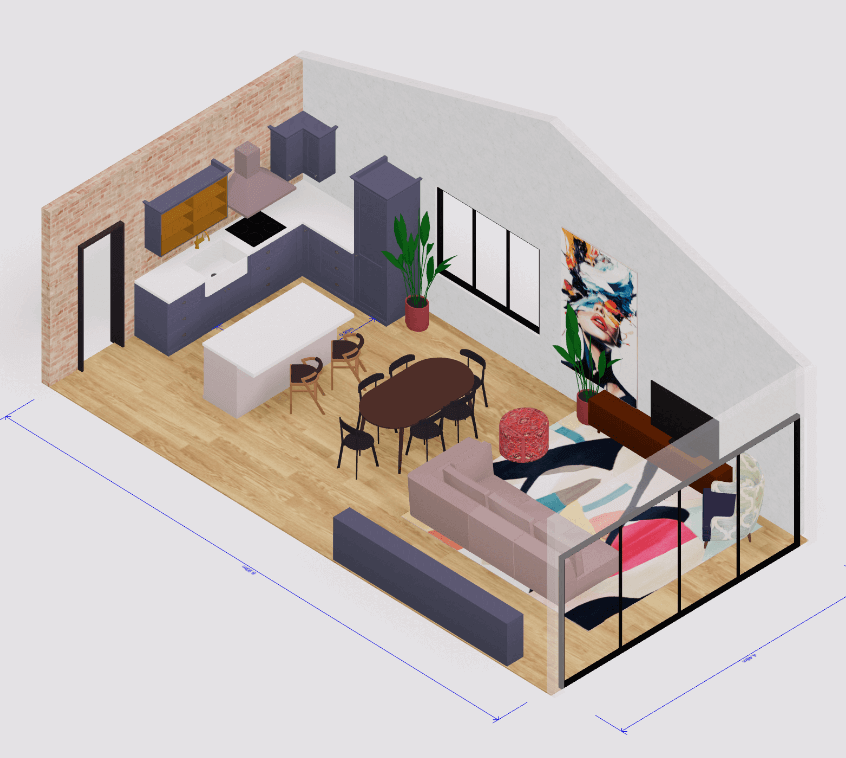 3D house design tool
3D house design tool
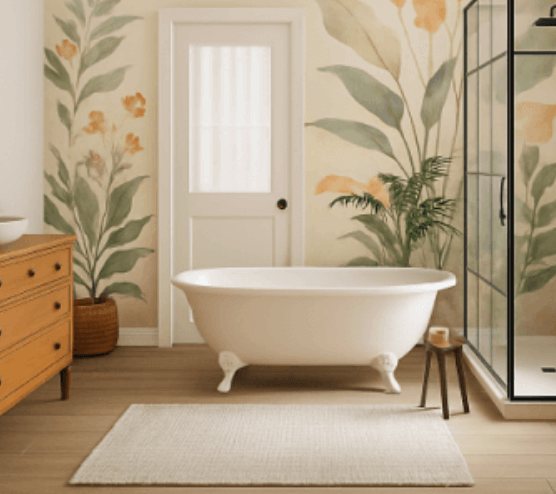
 Color palette generator
Color palette generator
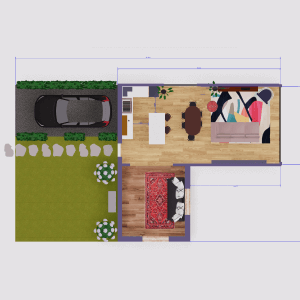 Floor plan creator
Floor plan creator
 Interior design app
Interior design app
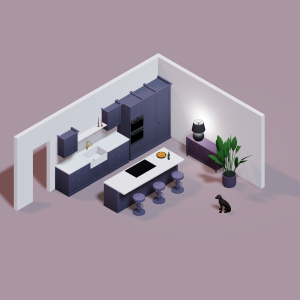 Kitchen design tool
Kitchen design tool
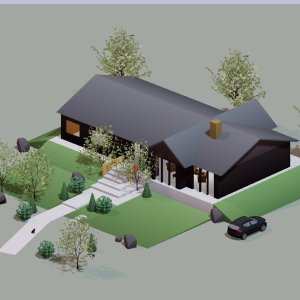 House design software
House design software
 Room designer
Room designer
 Landscape design software
Landscape design software
 Bedroom design
Bedroom design
 Office floor plan creator
Office floor plan creator
.png)



